Get full access with a free account
Benefits of the Coloplast® Professional Educational platform
- Get full access to all educational content, events and resources
- Track your progress
- Share content with your collegues
- Share supporting material with your patient
Diabetic foot ulcers: what are they and how do you manage them?
In this section, you’ll learn:
The burden of diabetic foot disease
Living with diabetic foot disease has a significant impact on a person’s quality of life.1,2 People with diabetes are almost twice as likely to suffer from anxiety and depression as the general population.3 If you add diabetic foot disease to the equation, the burden on the patient, their families, the healthcare system and society at large only increases.4 In fact, research shows that the five-year relative mortality rate of those with diabetic foot disease is 48%.5
As a healthcare professional, you play an important role in reducing this burden. This section gives you a basic understanding of what causes diabetic foot ulcers and specific guidance on how to manage them.
If you haven’t worked with patients with diabetes before and need a basic understanding of the causes and complications of this chronic disease, ready more about what diabetes are here.
What causes a diabetic foot ulcer?
There are two conditions that lead to diabetic foot disease:7, 4
- Peripheral diabetic neuropathy (PDN); and
- Peripheral arterial disease (PAD).
Learn more about Peripheral diabetic neuropathy and Peripheral arterial disease here.
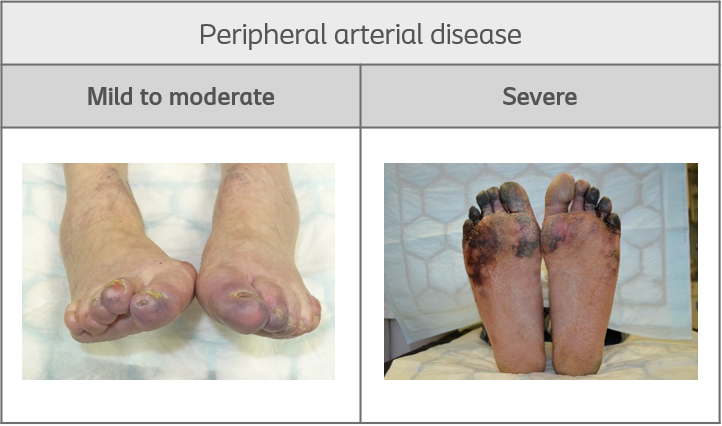
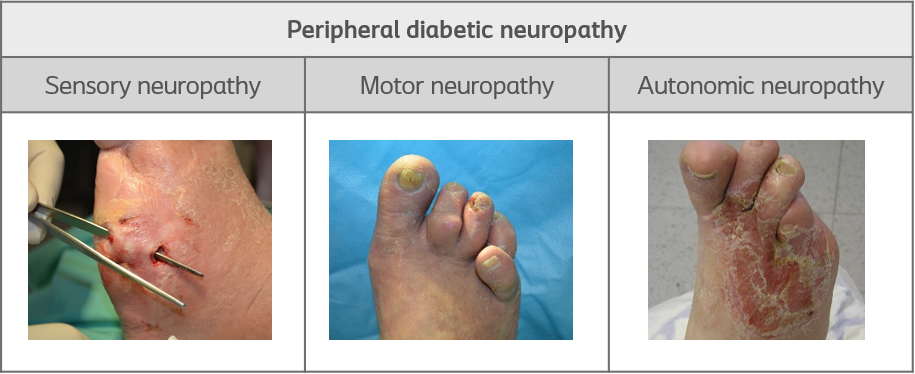
How do I manage a diabetic foot ulcer?
To manage diabetic foot ulcers effectively, you need to:
- conduct a holistic wound assessment; and
- determine if the wound is infected.
Let’s take a closer look at these two steps.
Step 1: Conducting a holistic wound assessment
Following a standardised and consistent strategy when you evaluate the wound is the best way to make sure you cover all the important aspects. We call this the holistic approach.4, 9 It involves considering internal as well as external factors, such as:10
- the patient’s full history;
- the patient’s medication profile and comorbidities;
- the status of the patient’s diabetes; and
- the wound’s history (for example, type, previous diabetic foot ulcers or amputations, cause, size and depth and signs of infection)4
To help you conduct a holistic wound assessment, try using The Triangle of Wound Assessment. This tool will ensure that you are consistent when evaluating the wound, and help you to choose the optimal treatment for your patient.11
You can read more about the Triangle of Wound Assessment tool here.
Step 2: Finding out if the ulcer is infected
Since infected diabetic foot ulcers have a greater risk of amputation, it’s important that you look for signs of infection when you assess the wound.
If your patient has a wound that is not healing, you should:5
- take the patient’s vital signs and appropriate blood tests;
- assess arterial perfusion, i.e. how well the blood flows through the arteries;
- after debriding the wound, probe and assess the size of the wound; and
- check for local or systemic signs or symptoms of infection.
If you see any or all of the following, it might be a sign of a deep infection:
- evidence of systemic toxicity,
- inflammation distant from the skin wound,
- persistent infection,
- deterioration of previously controlled glycaemia, or
- pain in a foot that had previously lost sensation (insensate).
Keep in mind that Peripheral diabetic neuropathy and Peripheral arterial disease can mask signs and symptoms of infection in diabetic foot ulcers.
To find out more about how to treat infection in diabetic foot ulcers, read more here.
References
-
- Price, P. (2004). The Diabetic Foot: Quality of Life. Clinical Infectious Diseases. 39, 129–31.
- Raghav, A., Ahmad Khan, Z., Kumar Labala, R., Ahmad, J., Noor, S., Kumar Mishra, B. (2019). Financial burden of diabetic foot ulcers to world: a progressive topic to discuss always. Ther Adv Endocrinol Metab. 9(1) 29–31.
- Ahmad, A., Abujbaraa, M., Jaddouc, H., Younesd, N. A. (2018). Anxiety and Depression Among Adult Patients With Diabetic Foot: Prevalence and Associated Factors. J Clin Med Res. 10(5):411-418.
- Schaper, N. C., van Netten, J. J., Apelqvist, J., Bus, S. A., Hinchliffe, R. J., Lipsky, B. A. on behalf of the International Working Group on the Diabetic Foot (IWGDF) (2019). IWGDF Practical guidelines on the prevention and management of diabetic foot disease.
- International Diabetes Federation (2017). Clinical Practice Recommendation on the Diabetic Foot: A guide for health care professionals: International Diabetes Federation: Brussels
- National Institute for Health and Care Excellence (NICE) (2015). Diabetic foot problems: Prevention and management.
- Pendsey, S. P. (2010). Understanding diabetic foot. Int J Diabetes Dev Ctries. Apr-Jun; 30(2): 75–79.
- Tawfik, M. (2017). Peripheral arterial disease and the diabetic foot. Diabetic Foot Canada 5: 10–13.
- World Union of Wound Healing Societies (WUWHS) (2016). Florence Congress, Position Document. Local management of diabetic foot ulcers. Wounds International.
- Wounds International (2013). International Best Practice Guidelines: Wound Management in Diabetic Foot Ulcers.
- Dowsett, C., Protz, K., Drouard, M. and Harding, K. G. (2015). Triangle of Wound Assessment made easy. Wounds International, May.
You may also be interested in…
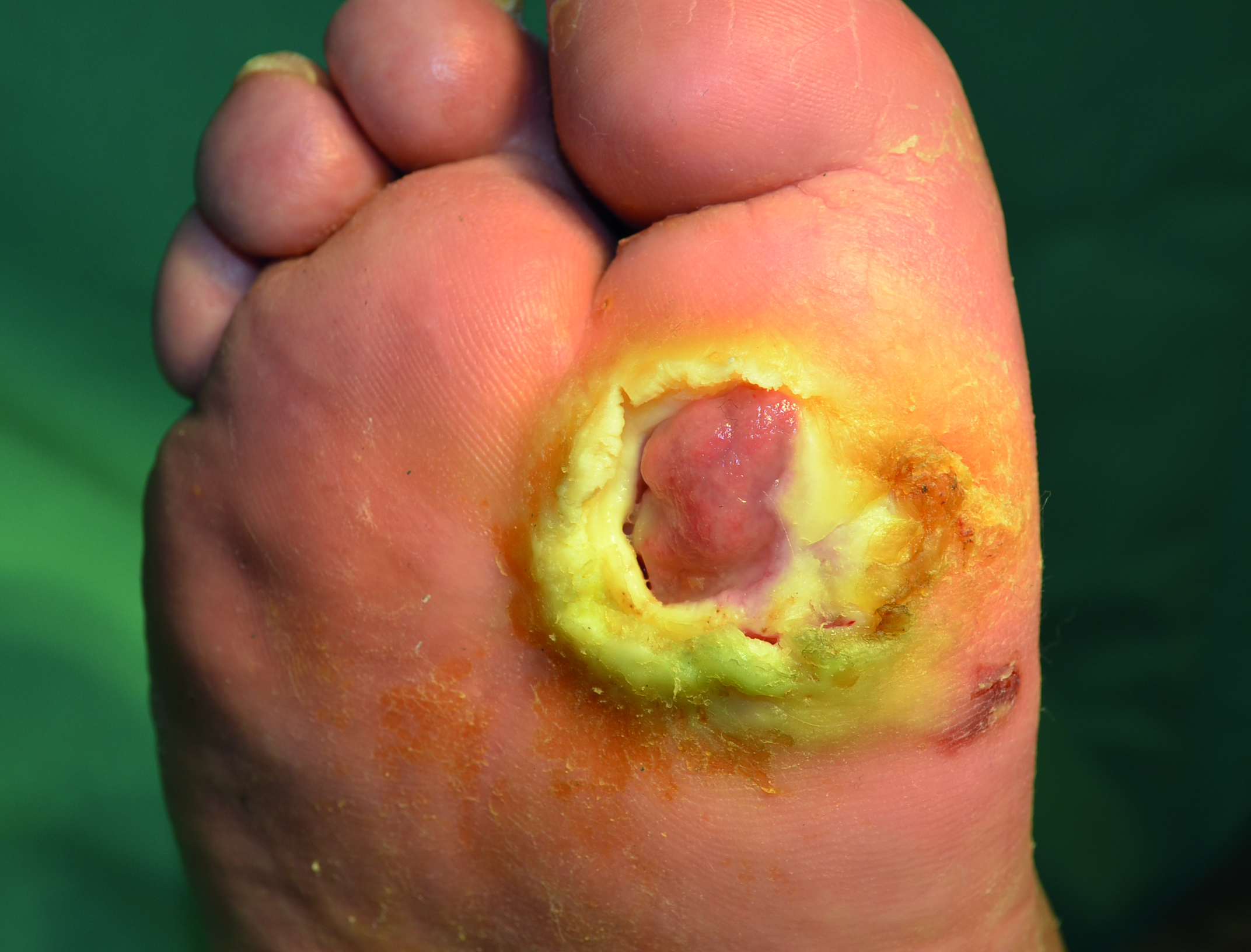
HEAL e-learning
Learn how to identify, assess and manage diabetic foot ulcers with this EWMA-endorsed course.
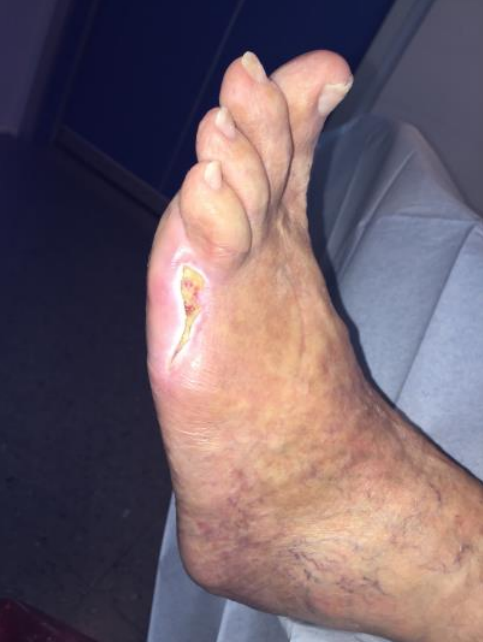
Patient case
Learn how a diabetic foot ulcer caused by amputation was managed with a silver dressing.
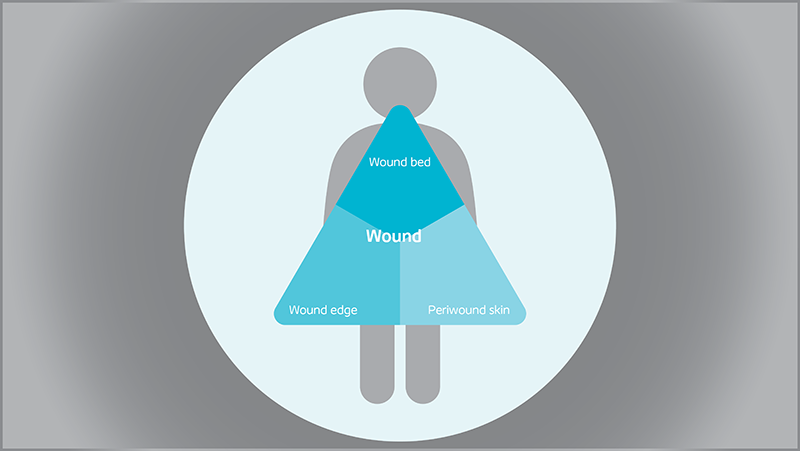
Triangle of Wound Assessment
Conduct a holistic and systematic wound assessment with our tool.

